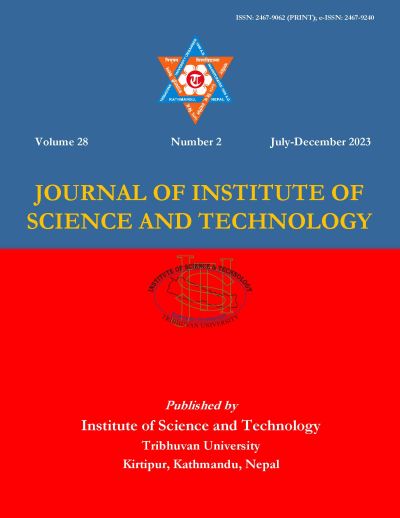Cytogenetics and Development of Mutation Inducing Wheat-Thinopyrum elongatum Disomic Addition Lines Possessing a Gametocidal Chromosome 2C
DOI:
https://doi.org/10.3126/jist.v28i2.60663Keywords:
Addition lines, cytological map, gametocidal chromosome, mutation breeding, wheatAbstract
Development of wheat-alien addition lines including gametocidal (Gc) chromosome in monosomic condition (a line with 2n = 45 chromosomes) is an established tool to induce chromosomal aberration. Gc induced chromosomal aberrations of alien chromosomes maintained in different wheat lines are valuable materials to construct cytological maps. In this study, the development of hybrid wheat addition lines containing 45 chromosomes has been attempted by crossing seven different types of Wheat-Thinopyrum elongatum-2C double monosomic addition lines (DMALs) and seven types of Wheat-Th. elongatum disomic addition lines (DALs), each with 2n=44 chromosomes. The cytological screening of the progenies showed three different types of plants (i.e. with 43, 44, and 45 chromosomes) among the hybrid wheat addition lines. The progeny plants containing 43, 44, and 45 chromosomes were segregated in a ratio of 2:1:1, respectively. These different lines differed from one another in various morphological and agronomic traits. Altogether 12 progeny seeds with 45 chromosomes were obtained. After sowing only 5 plants survived and developed seeds. These lines can be used as potential mutation-inducing plants.
Downloads
Downloads
Published
How to Cite
Issue
Section
License
Copyright (c) 2023 Institute of Science and Technology, T.U.

This work is licensed under a Creative Commons Attribution-ShareAlike 4.0 International License.
The views and interpretations in this journal are those of the author(s). They are not attributable to the Institute of Science and Technology, T.U. and do not imply the expression of any opinion concerning the legal status of any country, territory, city, area of its authorities, or concerning the delimitation of its frontiers of boundaries.
The copyright of the articles is held by the Institute of Science and Technology, T.U.




